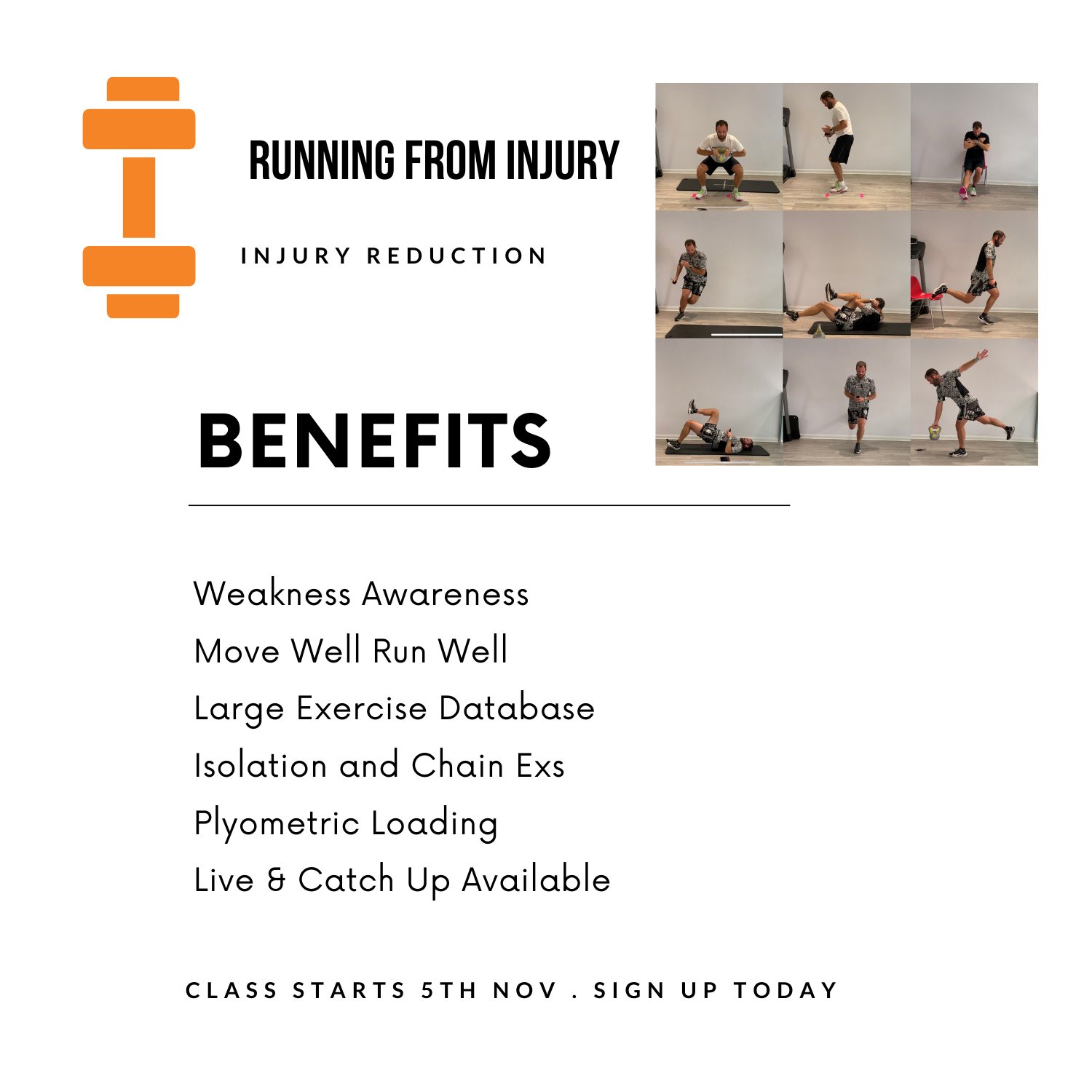Injury made me do it, but a thirst to get better made me achieve it. This course was created after going through an injury myself. After reviewing my processes/training to see why and if I could change the lead up to the injury. I am lucky that I have a background in running injuries. But to know isn’t enough. Now it was time to implement this to my own running.

The first thing that jumped out at me was that I was not doing any strength and conditioning work. I didn’t even know what my indifferences and imbalances were. What the difference between my left side and right side were. I know I have had previous injuries on the right side of the body. I didn’t know what this resulted in when I was running or if I was running to my full capacity.

Over the years it has been great to be exposed to philosophies from Australia to America. There are differing thought processes from all over the world. Different ways and best methods to create runners that are as robust as possible.

From the experiences I’ve been able to gain, I constructed a course with my spin on these concepts. The Running From Injury course runs over six weeks and looks at different components of running. Taking these concepts and building them up over 6 weeks.
Performance is important for us all. Performance is built on consistency. Consistency in training means doing the right thing over and over again to build capacity. The increase in capacity results in the body accepting more load. More load excepted allows a development in strength.

Break in routine/consistency reverses the previous sequence of events. The biggest interruption in training comes from injury. Injuries occur by direct trauma and micro-trauma (chronic overload). Micro-trauma occurs when asking the body to repeatedly do things it doesn’t have a capacity to do. Ultimately not recovering adequately before introducing further load.
Over the six weeks you will see the structure of the classes remains consistent. The content however varies from week to week but there are definite sections to the class. It is crucial to understand the sections so we can implement them.
Warmup
The first section of the class is the warmup. The importance of this is to start to mobilise the body. Before we start to increase the load on it. Moving well through this section allows the brain to connect with the various muscle groups. Preparing it for the session ahead. The warmup looks at range whilst the move well section will look to raise the heart rate.

Move Well Section
This section is where we will look to include running specific drills. These help you move well and focus on form and movement.
The drills vary from small circuits to specific biomechanics that link to running. These drills can be modified to be included as a running specific warmup. To prepare the body for the work ahead.
Moving well is important in this section, some more time maybe spent explaining the drills than in the other sections.

Targeted Running Muscle Group Section
In this section we will look at exercises for the gluteal, hamstrings, quadriceps and calf. These exercises will target specific muscle groups that are strongly linked with reducing injury risk in running.
Although it’s important to strengthen the chain of muscles, it is still important to target specific areas. These may be your areas for development. Your body may compensate for weaknesses by overloading a stronger muscle instead of collectively using the muscles.

Core Section
In this section we will incorporate a lot of different exercises where you can strengthen the whole of the core. Generally speaking we tend to focus on the abdominals and mainly the rectus abdominal. The core is built like a cylinder. The roof of the core is the diaphragm. On the base is the pelvic floor. At the front we have the rectus abdominals. On the sides we have the obliques. At the back we have erector spinae and quadratus lumborum.

Plyometric Section
Plyometrics very important for generating force and increase the capacity of tendons to absorb unreacted demands of running. There is a vast body of evidence in the masters runner that the involvement of plyometric exercises in they’re running and strengthening plan can reduce the incidence of injury greatly.
Plyometric training or jump-training is important to gradually increase the load that you put your tendon under. During the six weeks the volume increases. You will monitor your response to the drills and modify as needed to lower the impact as required.

Cool Down Section
The cool down is for recovery and to finished the session.

The class itself has greatly helped me manage my foot and my calf strength. I also feel a lot stronger whilst I’m running. The quality of my ground contact has improved with the plyometric drills that I perform every week. I can’t recommend this class highly enough. The feedback from the group has been that they feel stronger in their day-to-day activities. The improvements were also seen in hillwalking, dancing, golfing and also swimming.

If you’re interested in saying that for the class, please drop me a message en
james@spearphysiotherapy.co.uk
Or if you wish you can sign up directly to the next block that starts on 5 November at
Thanks for your time in reading this. The aim of the blog is to help runners run, if you can share please do.
Run long and prosper
James
